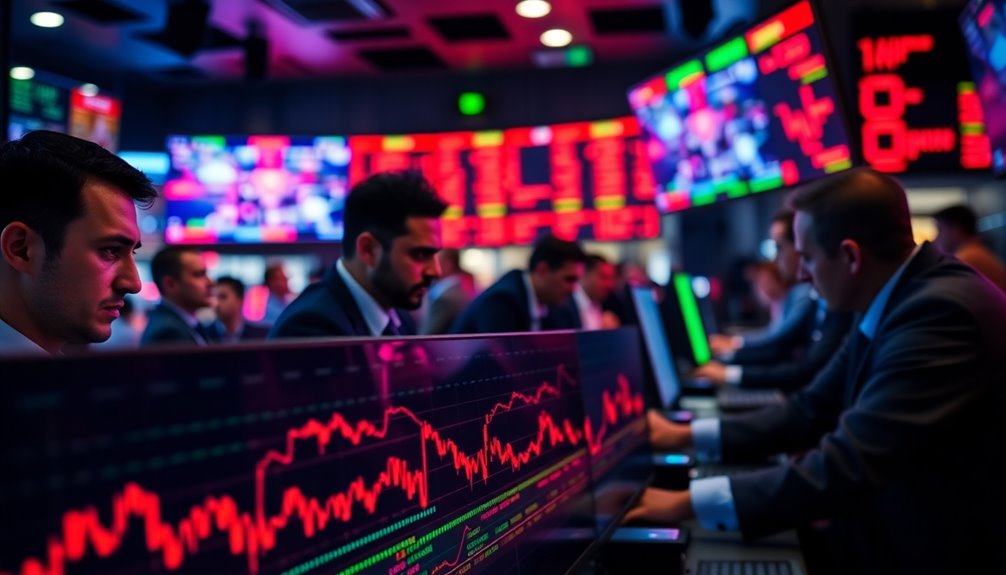
Why does the crypto market experience such wild fluctuations? The answer lies in a complex interplay of factors that affect investor confidence and market dynamics. One major contributor to this volatility is the lack of regulation. Without clear guidelines, uncertainty looms over the market, making you question the safety of your investments. This ambiguity can lead to dramatic price swings as traders react to news and rumors rather than stable fundamentals.
Speculative trading also plays a significant role. You'll notice that the market often moves based on sentiment rather than actual value, with traders leveraging their positions to amplify gains. This high-stakes game can lead to rapid price changes, as a small shift in sentiment can trigger a cascade of buying or selling. Combined with the supply and demand dynamics, where limited cryptocurrency supply and large "whale" holdings can heavily influence the market, it's no wonder that prices can swing wildly. High volatility is particularly characteristic of the crypto market compared to traditional assets, further complicating the landscape for investors.
Macroeconomic factors further complicate the picture. For instance, rising inflation and changing interest rates can directly impact your crypto investments. When the Consumer Price Index (CPI) rises, it often leads to a drop in crypto prices, as investors flee to safer assets.
Technological advancements also add to the volatility. While some innovations can stabilize the market, others may disrupt it, creating uncertainty around adoption and security. Politics can't be ignored either. Regulatory changes can make or break your crypto investments. Sudden policy announcements or geopolitical tensions can influence market sentiment, leading to abrupt price shifts.
On the flip side, pro-crypto policies can create a more stable environment, encouraging growth. Yet, even supportive economic policies won't protect you from the market's inherent unpredictability. The use of derivatives and leverage amplifies these price movements, making it easier for large trades to send ripples through the market. Limited liquidity in smaller cryptocurrencies exacerbates this effect, meaning that even moderate trades can cause significant price swings.
Overall market sentiment, influenced by news and rumors, drives speculative trading and contributes to volatility. Looking ahead, the future of crypto markets hinges on clearer regulatory frameworks, favorable macroeconomic conditions, and technological innovations. Building investor confidence through transparency will be essential for long-term stability. As you navigate this tumultuous landscape, understanding these factors can help you make more informed decisions.
Conclusion
In conclusion, the recent volatility in the crypto market stems from a mix of regulatory news, market sentiment, and macroeconomic factors. As a trader or investor, staying informed and adapting your strategies is crucial. Remember, the crypto landscape can shift quickly, so keeping a close eye on developments will help you navigate the ups and downs. Embrace the uncertainty, and don't forget to manage your risk wisely. Your approach can make all the difference in this dynamic market.










